| Halton Borough Council is putting down roots for a greener, more sustainable Halton with an exciting programme to plant an additional 130,000 trees across Runcorn and Widnes by 2030. Currently the Council plants around 1, 500 new trees each year.
A symbolic launch of the scheme took place recently by the Leader of the Council, Cllr Mike Wharton, who made climate change one of his key priorities as a new leader, accompanied by Cllr Phil Harris, appointed to lead on Climate Change, who helped develop the project. The Big Halton Forest Project aims to produce a greener Halton and create a diverse forest by planting at least one tree per person in the borough, by end of the decade. The project is also going to explore how improvements can be made to the waterfronts of both towns and the river, but that is only at an early stage at the moment. The Big Halton Forest will not just be in one place, it will be across the borough and it will range from single trees to large groups of trees and associated planting. Every community has the chance to participate in creating the forest The project will be one of the Council’s major initiatives to encourage everyone to participate in improving the green infrastructure of the borough and gain an understanding of how anyone can help fight climate change. The first major plantings will take place in the next planting season later in the year (Autumn/Winter 2022/23) so anyone interested in contributing to the project has several months to plan it or seek their own funding. The Council’s Executive Board Member for Climate Change, Cllr Phil Harris, said: “Everyone will have the opportunity to help create tree cover equivalent to a new forest. From a back garden to a school, housing estate or development site, there are many options. “This eight year task represents an exciting opportunity to increase the cover across Halton, but it won’t happen overnight. A typical tree whip can take five years to develop so it can absorb carbon emissions which is why it was identified as an early priority for the Council’s efforts to remove carbon from the air. “Partnering with the Council will provide a range of opportunities to promote company environmental targets and bring tangible benefits to local communities or even remember a loved one who has passed away.” In the years ahead, the project is planning to plant trees grown from existing Halton trees, which will improve their resistance to disease and ensure a local supplier is providing the trees reducing carbon emissions from transport. A tendering scheme will be commissioned in 2022 to identify a suitable tree supplier. In the months ahead discussions will also take place with private and public landowners so the spread of the forest can be increased beyond just publicly owned land. A Council web page signposts sources of funding for anyone who would like to organise their own tree planting later in the year. http://www.halton.gov.uk/forest The web page will be updated in the months ahead, to provide further advice and guidance. Social benefits will include: •The creation of green space and woodland habitats have a huge positive social impact on wellbeing. •HBC will aim to create and maintain safe and welcoming spaces for families to spend time and better understand trees and woodlands and encourage others to do likewise. •Working with communities and volunteers to improve and enhance woodland sites will be an integral part of the project strategy. Environmental impacts will include: •Diversifying woodlands through Improved management. •Introduction of new species to help mitigate against pests and diseases and allow mixed broadleaf and conifer stands to develop. •Allow woodlands to mature and widen the variety of habitats. •Provide a major contribution to carbon reduction and impact of climate change. For more information go to http://www.halton.gov.uk/forest
|
The Big Halton Forest – putting down roots for a greener future

